This Shiva temple, known as Prasanna Virupaksha temple in the inscription, is popularly called as “underground shiva temple” since the temple is constructed much below the present ground level and many parts of the temple are under water. Situated in amidst a beautiful green lawn, the temple stands as a serene oasis. Its unique feature lies in its construction, as it was built several meters below the ground level, earning it the name Underground Shiva Temple. This temple is believed to be one of the oldest temples in Hampi.
It is located adjacent to the Hampi to Kamalapura main road, approximately 2.2 Kilometers from the Hampi Bus Stand. You can walk or hire an autorickshaw or rent a bicycle to get there.

Table of Contents:-
The Underground Siva Temple in Hampi stands as a testament to the architectural brilliance and spiritual devotion of the Vijayanagara Empire. Exploring this subterranean marvel allows visitors to unravel the secrets of the past, while experiencing a deep sense of spirituality and awe-inspiring beauty. As you descend into the depths of the temple, immerse yourself in the ambiance of divine sanctity and marvel at the intricate carvings that adorn the walls. The Underground Siva Temple is a must-visit destination for those seeking a unique and captivating experience in the historical wonderland of Hampi.

Quick Facts
- Timing: 06:00 AM to 06:00 PM
- Entry Fee: No entry fee required
- Photography: Allowed
- Location: Google Maps
- Must-See Attractions
History of Underground Shiva Temple
The Underground Shiva Temple is a remarkable testament to the architectural and cultural prowess of the Vijayanagara Empire. Believed to have been constructed during the reign of the empire, this temple, stylistically datable to the 14th century CE, stands as a masterpiece of ancient craftsmanship. Built in different phases, it showcases the empire’s grandeur and legacy.
Outside the enclosure wall, on the southwest, stands an ornate mandapa in the typical Vijayanagara style. Here, visitors can find a slab bearing an inscription dated to 1513 CE, recording the gift of certain villages for the service of God Prasanna Virupaksha during the reign of Krishnadevaraya.[1] This inscription adds to the historical richness of the site, providing insights into the temple’s patronage and significance during the Vijayanagara period.
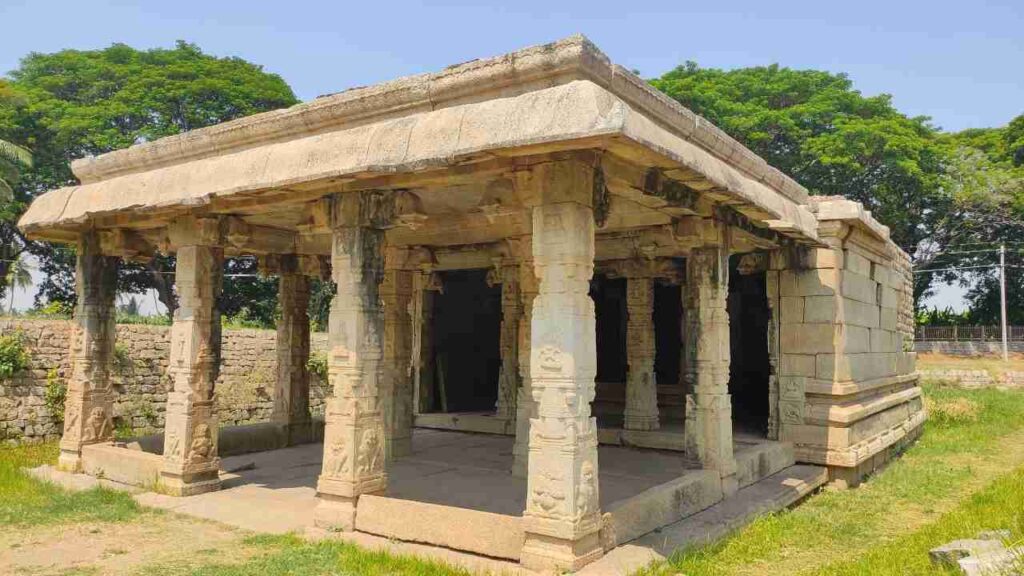
Exploring the Underground Shiva Temple Complex
The entrance to the Underground Shiva Temple lies at ground level. Stepping through the doorway, visitors descend a flight of stairs, leading them down into the heart of the temple complex. As they go deeper, they are enveloped in a cooler atmosphere, a welcome respite from the hot Hampi sun.
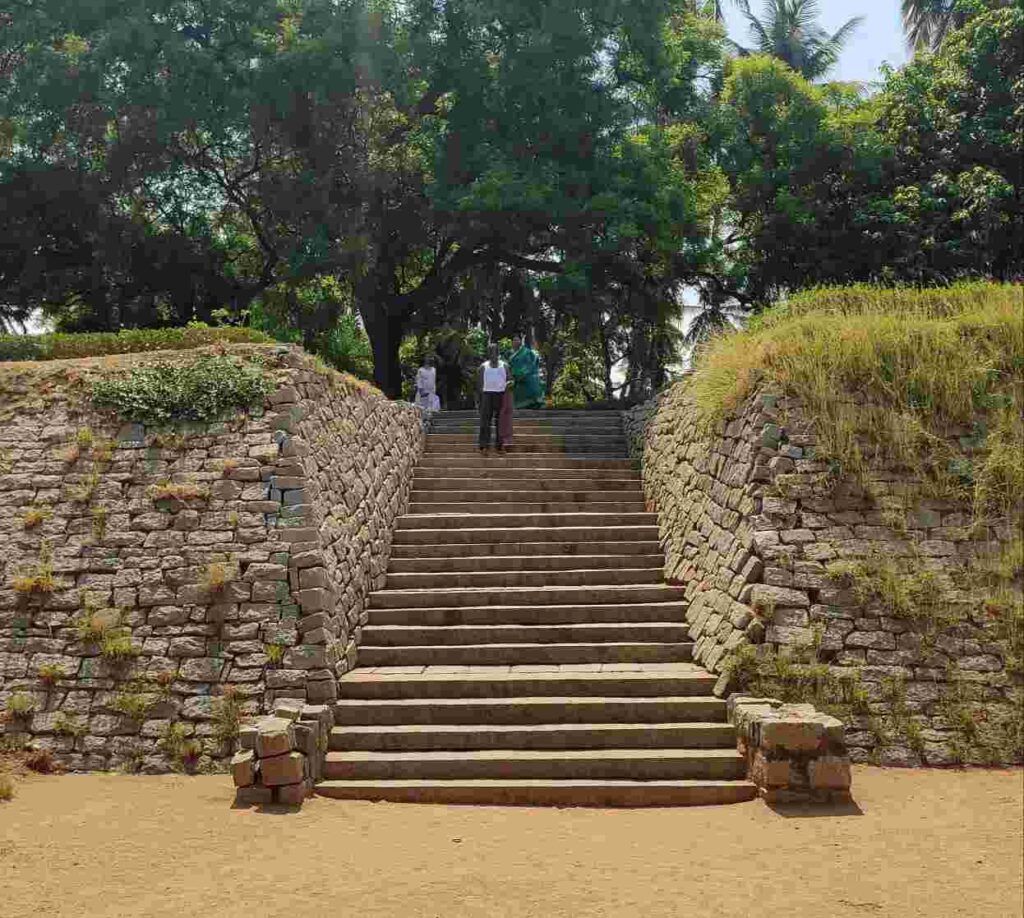
Unique Tower Entrance
From the main hall in front of the shrine, visitors can see the main tower, through which they enter the temple. Unlike traditional towers with a Gopura, this one has a flat roof, adding to its distinctive character.
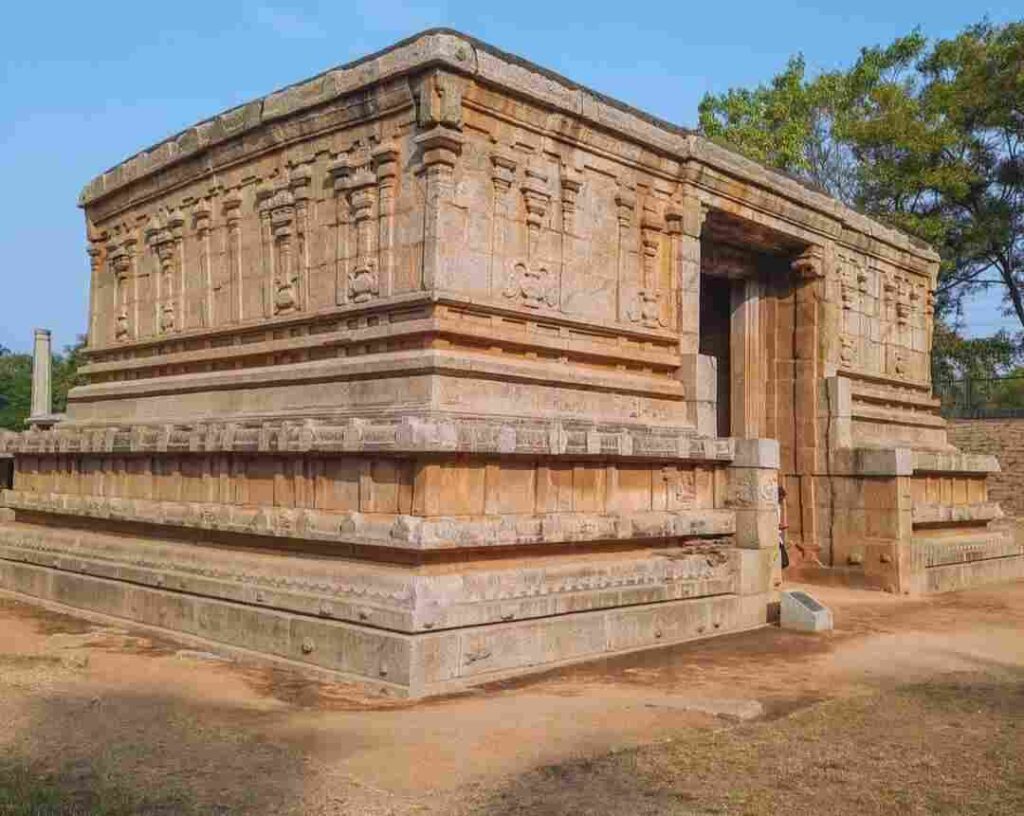
Architectural Marvels from the 14th Century
Dating back to the 14th century CE, this temple complex showcases a fascinating blend of architectural styles and features built over different phases. The main temple, facing eastward, comprises various elements such as a garbhagriha (sanctum), an antarala (antechamber), a pradakshinapatha (circumambulatory passage), a sabha mandapa or ranga mandapa (pillared hall), a mahamandapa (large pillared hall), and a pillared porch.

Additional Structures and Extensions
The temple also boasts additional garbhagrihas, with one opening into the rangamandapa to the south and another detached from the rangamandapa to the north. Columned extensions adorn the north and south sides of the pillared porch, enhancing the grandeur of the complex. Additionally, there are two subsidiary shrines, one located on the northwest and the other featuring a brick superstructure on the southwest.
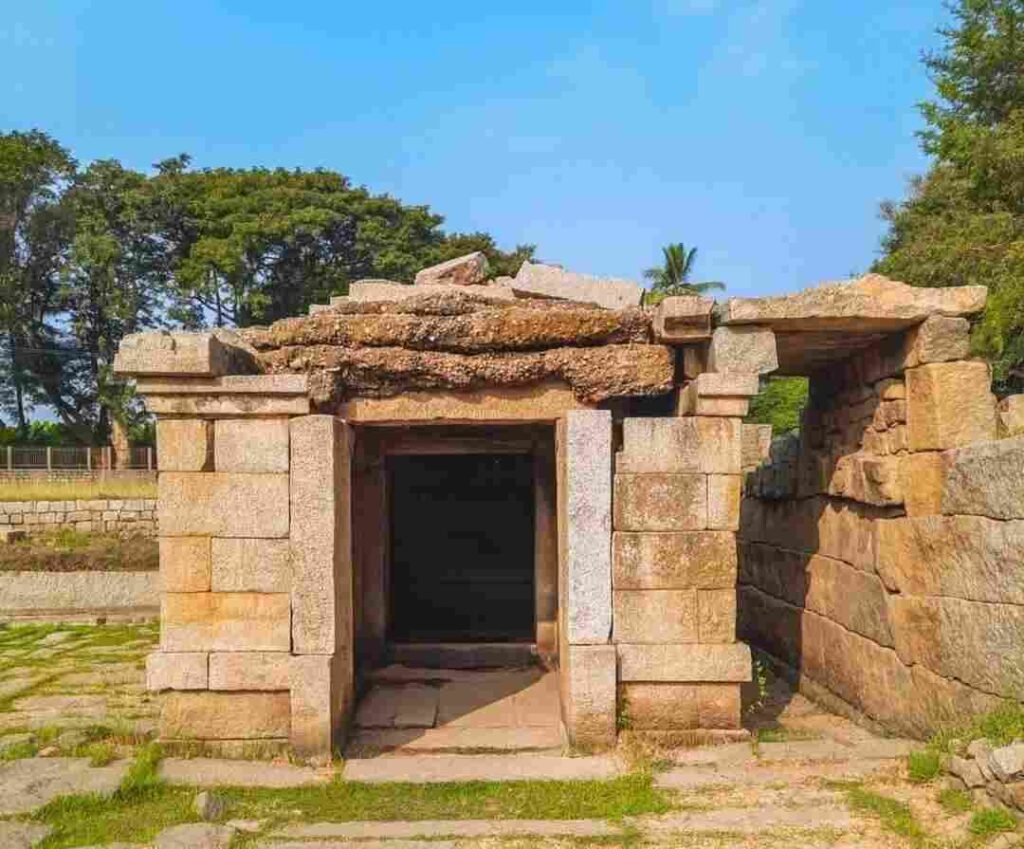
Surroundings and Ambiance
Enclosing these structures is an enclosure wall aligned with the columned hall, with an entrance passage on the east side. An imposing gopura (gateway tower) once stood on the east, although the superstructure above the garbhagriha and the gopura itself are now lost to time.
The well-maintained lawn adds a touch of serenity to the overall ambiance. Surrounded by lush greenery, it provides a peaceful retreat for visitors to relax and reflect. Despite its location near the main road and Noblemen’s Quarters, the temple remains less crowded, allowing visitors to explore its outside and top portions freely.

Sanctum Sanctorum (Garbhagriha)
The most fascinating part of the temple is its inner sanctum, called the garbhagriha, where the main idol is kept. What makes this chamber special is that it’s usually underwater for most of the year. But during the dry season, the water levels go down, revealing the Shiva linga (idol) inside. This natural event makes the temple even more mysterious and attracts people from all over to see its spiritual significance.
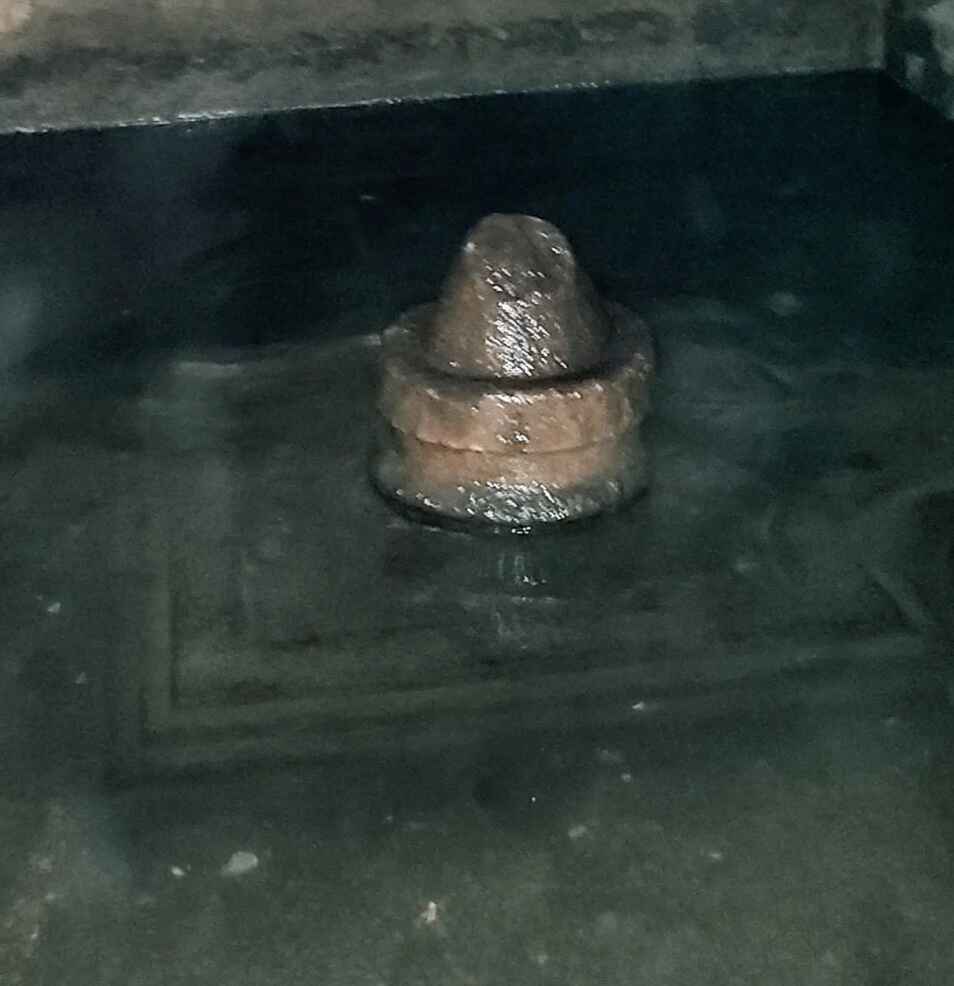
Seeing the Shiva linga emerge from the water is a powerful symbol of renewal and growth. It fills visitors with a sense of awe and respect. This sight draws many to witness the temple’s unique connection to nature and spirituality.
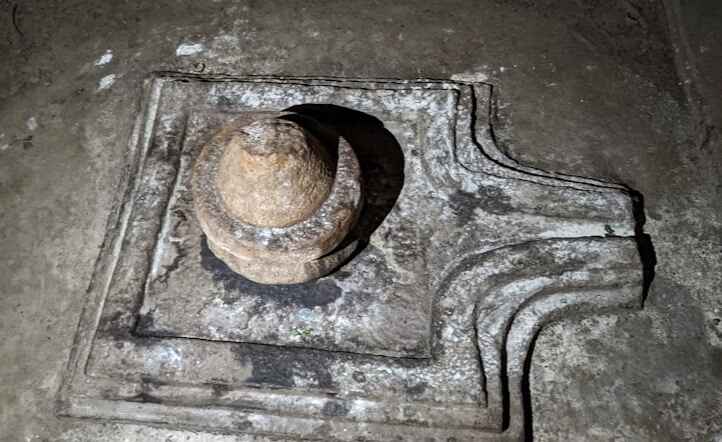
Understanding the Temple’s Water Mystery
The reason for this water isn’t a mystical spring, as some might imagine. Instead, it’s a result of the temple’s specific location and construction. Due to its low elevation compared to the surrounding terrain, the temple acts as a natural collection point for rainwater. Furthermore, the absence of a well-defined drainage system prevents the accumulated water from effectively flowing out. This combination leads to stagnant water, particularly evident during the monsoon season when heavy rainfall occurs.
However, there’s no need to worry about year-round flooding. During the dry summer months, when rainfall is scarce, the stagnant water gradually evaporates or seeps into the ground. This cycle of accumulation and evaporation has become an inherent part of the temple’s environment.
It’s important to note that the presence of stagnant water can vary depending on the weather conditions and maintenance efforts. Local authorities and temple management may take steps to address drainage issues and minimize the accumulation of water within the temple premises.
Visitors should exercise caution when navigating areas with stagnant water, as it may pose slipping hazards or affect the overall experience of exploring the temple.
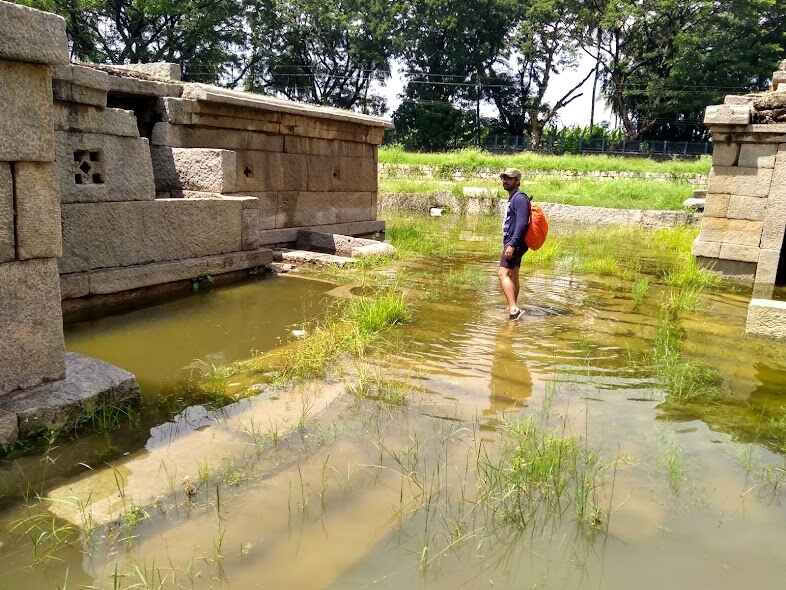
Water Canal System
Around the main temple, there’s a canal system that’s dry in summer but fills up during the rainy season. This system was really important for managing water for the temple, especially for rituals and daily use by people visiting.
But it’s not just about practical stuff. Some experts think the canals might have had special meaning too, like representing holy rivers or helping with religious ceremonies. Exploring these canals shows how clever the builders were and how they respected water in their culture.
This mix of practicality and symbolism gives us a peek into the temple’s past. The fact that the canals change with the seasons tells us they were carefully designed to fit with nature and the time period they were built in. Overall, the canal system adds another layer to the temple’s story, showing us both how smart the builders were and what they believed in.
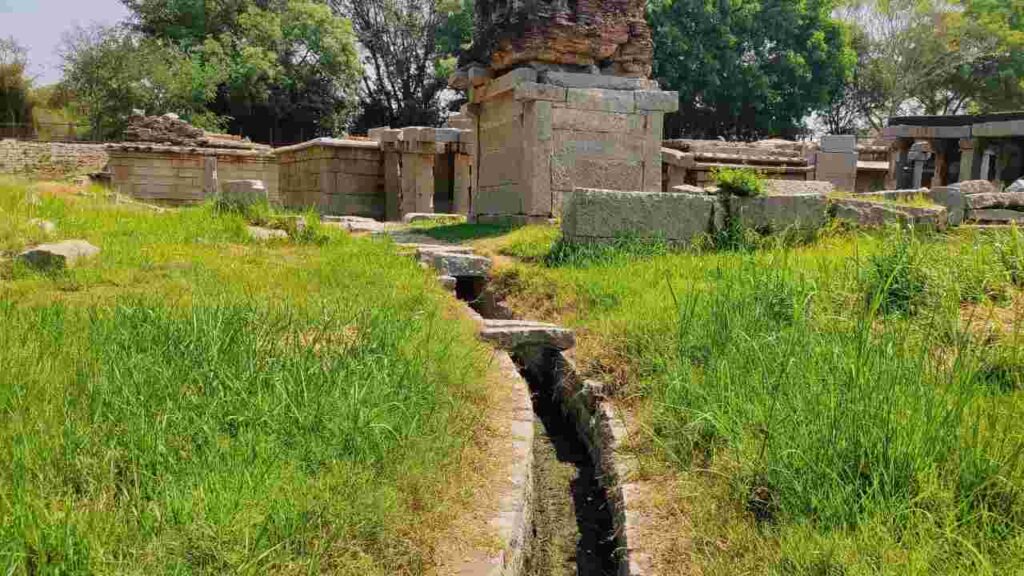
Must-see attractions at Underground Shiva Temple
Hampi’s architectural landscape is dominated by towering temples, but the Underground Shiva Temple offers a hidden gem with a unique perspective. Here are some fascinating attractions you shouldn’t miss:
Subterranean Exploration:
Unlike the other grand temples that dominate Hampi’s landscape, the Underground Shiva Temple offers a unique subterranean experience. Descend a flight of steps and be transported to a cooler, quieter world. The temple’s placement below ground level sparks curiosity and adds a touch of mystery to your exploration.
Architectural Intrigue:
While submerged, the temple doesn’t lack architectural merit. Explore the main hall (Maha Mantapa), a courtyard (Ardha Mantapa), and the inner sanctum (Garbhagriha). Pillars, though not adorned with elaborate carvings like other Hampi temples, still showcase the Vijayanagara era’s architectural prowess.
A Contrast in Design:
If you’ve already visited some of Hampi’s more extravagantly decorated temples, the Underground Shiva Temple offers an interesting contrast. The simpler design, with a focus on clean lines and functionality, might surprise you. This absence of elaborate carvings could be interpreted in a few ways: perhaps reflecting a focus on inner devotion rather than outward display, or simply due to the challenges of carving in an underground space.
Tranquil Escape:
After your exploration, emerge from the temple and be greeted by a lush green garden. Take a moment to relax and soak in the serene atmosphere. The contrast between the cool, dimly lit temple and the vibrant greenery above adds another layer to the unique experience offered by the Underground Shiva Temple.
Sanctum Sanctorum (Garbhagriha):
Explore the innermost chamber housing the main idol, which remains submerged in water for most of the year, offering a rare glimpse of the Shiva linga during the dry season.
Water Canal System:
Discover the ancient water canal system surrounding the main temple, believed to have played a crucial role in water management and possibly holding ritualistic significance.
Inscriptions and Artifacts:
Study the inscriptions and artifacts found within the temple complex, providing valuable insights into the history, culture, and religious practices of the Vijayanagara Empire.
Tips for Visiting the Underground Shiva Temple
The Underground Shiva Temple in Hampi offers a unique experience, but a little preparation can enhance your visit. Here are some tips to keep in mind:
Be Aware of Potential Odor:
The Underground Shiva Temple have a strong smell due to its location below ground, potentially limited ventilation, and stagnant water present in the temple complex. If you are sensitive to smells, consider this factor before deciding to visit.
Entrance and Location:
The Underground Shiva Temple is a bit off the beaten path compared to Hampi’s major attractions. Look for it near the Hazara Rama Temple complex. A small, unassuming entrance marked by steps leading down signals your descent into the temple’s hidden embrace.
Timing:
The temple timings are generally consistent with other Hampi temples, opening around sunrise (around 6:00 AM) and closing around sunset (around 6:00 PM).
What to Wear:
As with most places of worship in India, dressing modestly is recommended. Opt for clothing that covers your shoulders and knees. This demonstrates respect for the temple’s sanctity.
Footwear:
You’ll need to remove your shoes before entering the inner sanctum. It’s advisable to wear comfortable shoes that are easy to slip on and off, or carry socks for a more pleasant experience on the potentially cool, damp floor.
Be Prepared for Darkness:
The temple’s subterranean nature means natural light is limited. Carrying a small flashlight or using your phone’s light will help you navigate the interior comfortably and appreciate the intricate details of the architecture.
Mind Your Step:
The steps leading down to the temple can be a bit steep and uneven. Take your time and descend cautiously, especially in the subdued light. Mind your footing to ensure a safe and smooth descent.
Respect the Sanctity:
Maintain a respectful and quiet demeanor while visiting the temple. Avoid loud conversations or disruptive behavior.
Monsoon Season:
Hampi experiences a monsoon season roughly between July and September. During this time, the inner sanctum can become flooded or very wet. It’s best to check the ground conditions before visiting to avoid any inconvenience.
Photography:
Photography is usually permitted inside the temple, but it’s always good practice to ask for permission before taking any pictures, especially if there are devotees or visitors present.
Water:
Carry water bottles, as it can get hot exploring the temple complex, especially during the summer months.
Guided Tours:
Consider joining a guided tour to gain insights into the history, architecture, and significance of the temple.
Enjoy:
Take your time to soak in the spiritual atmosphere and enjoy the unique experience of visiting this ancient site.
Gallery:-
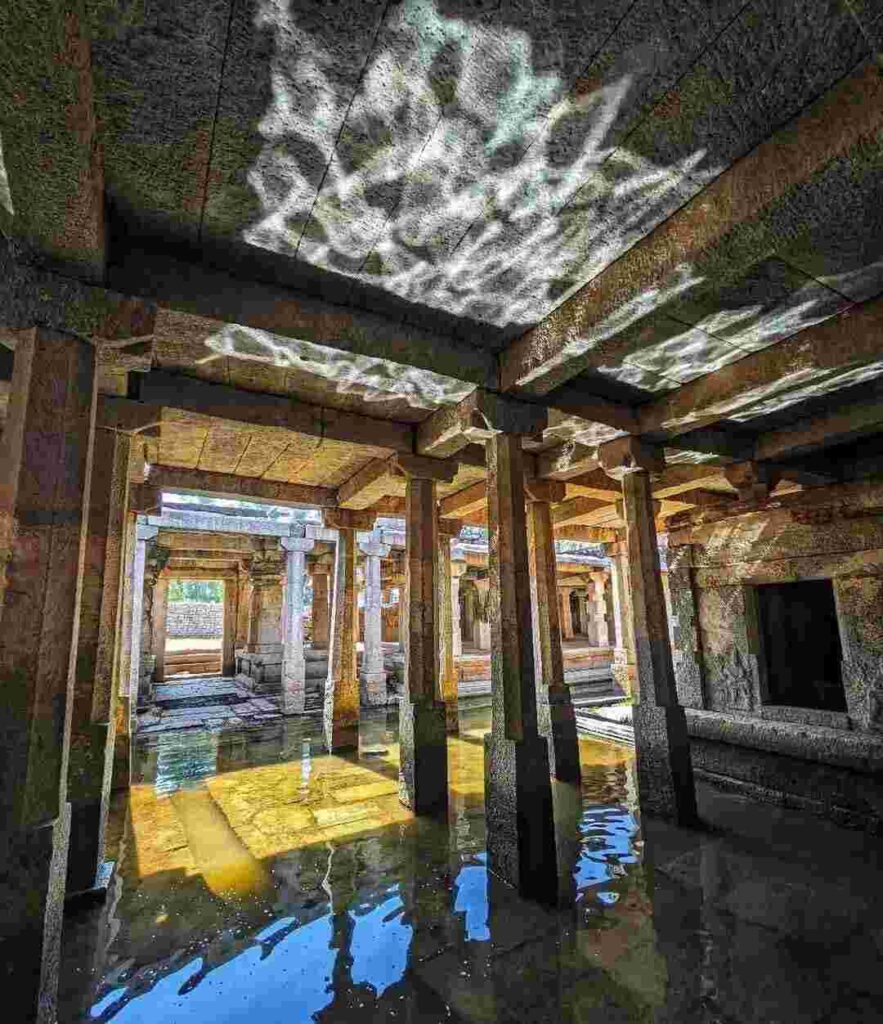
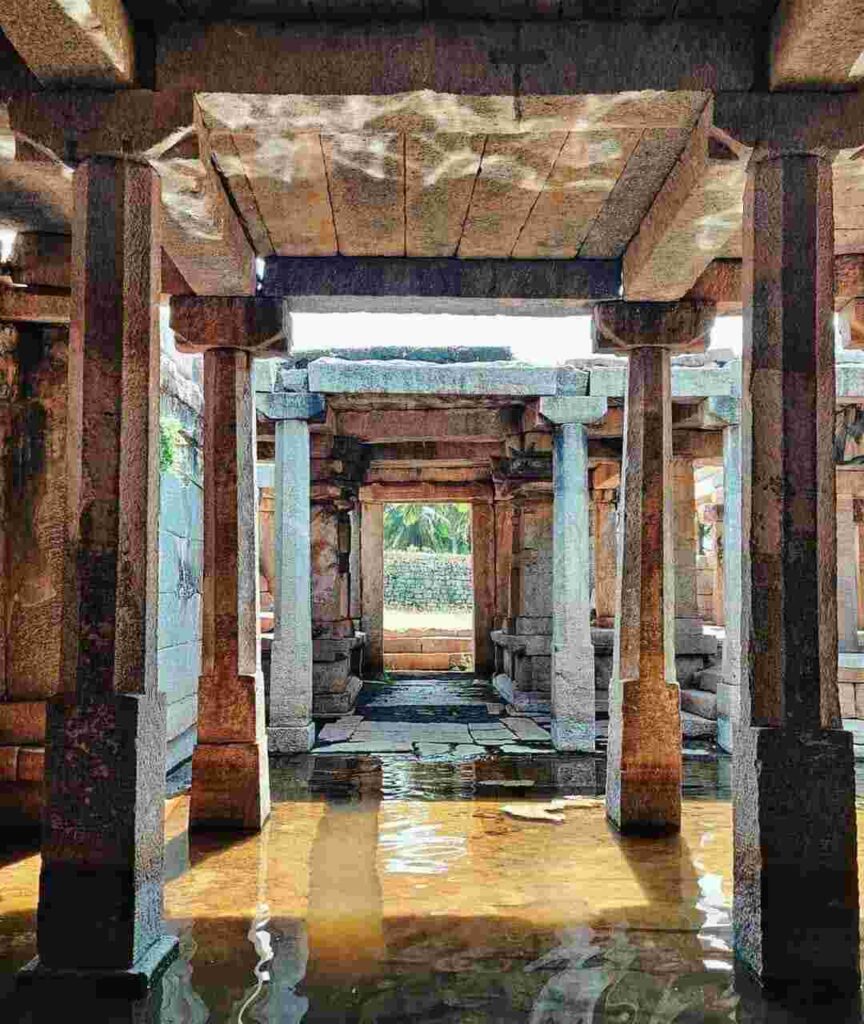
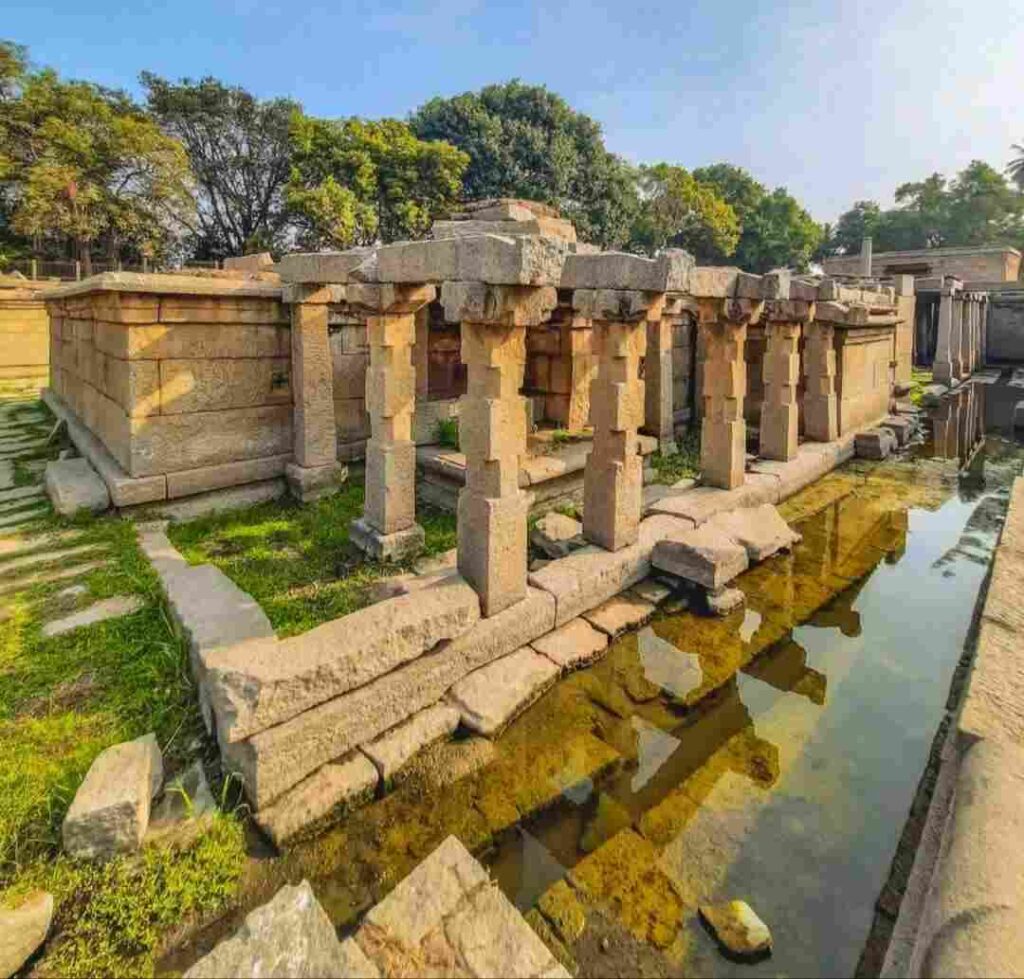

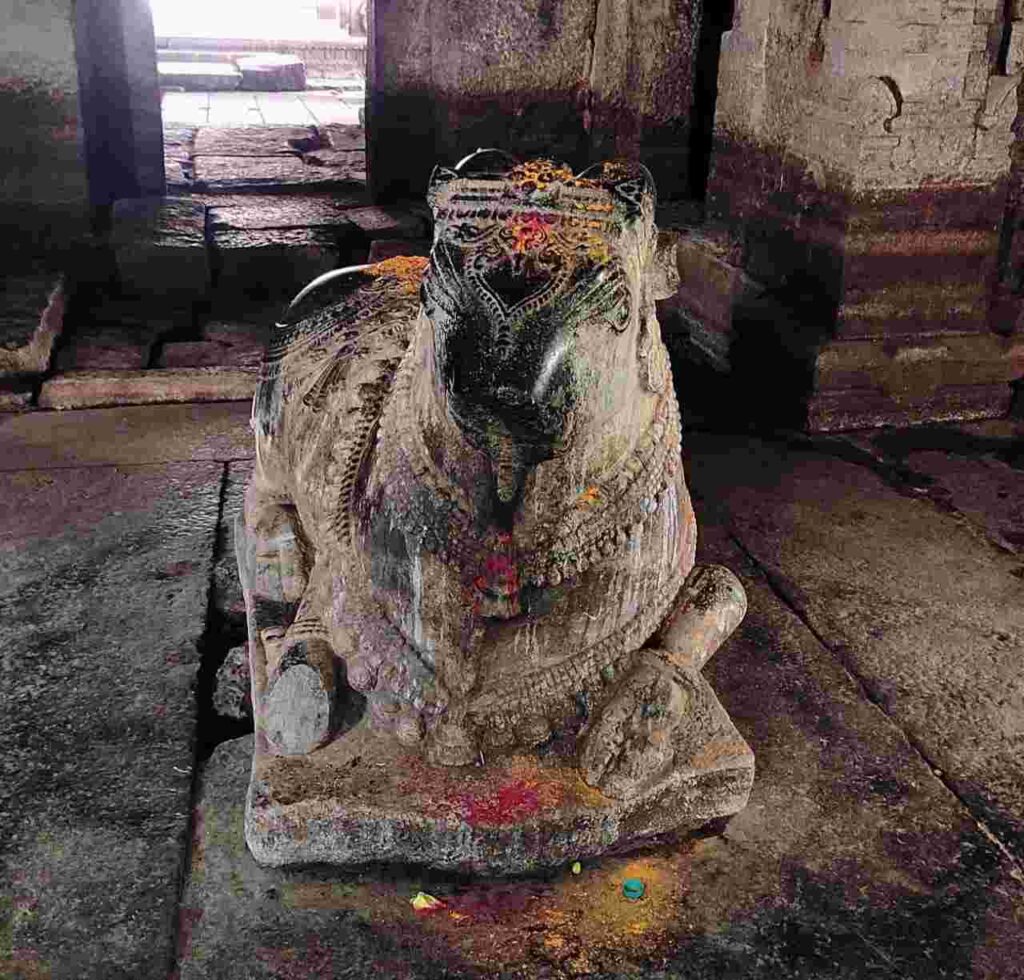
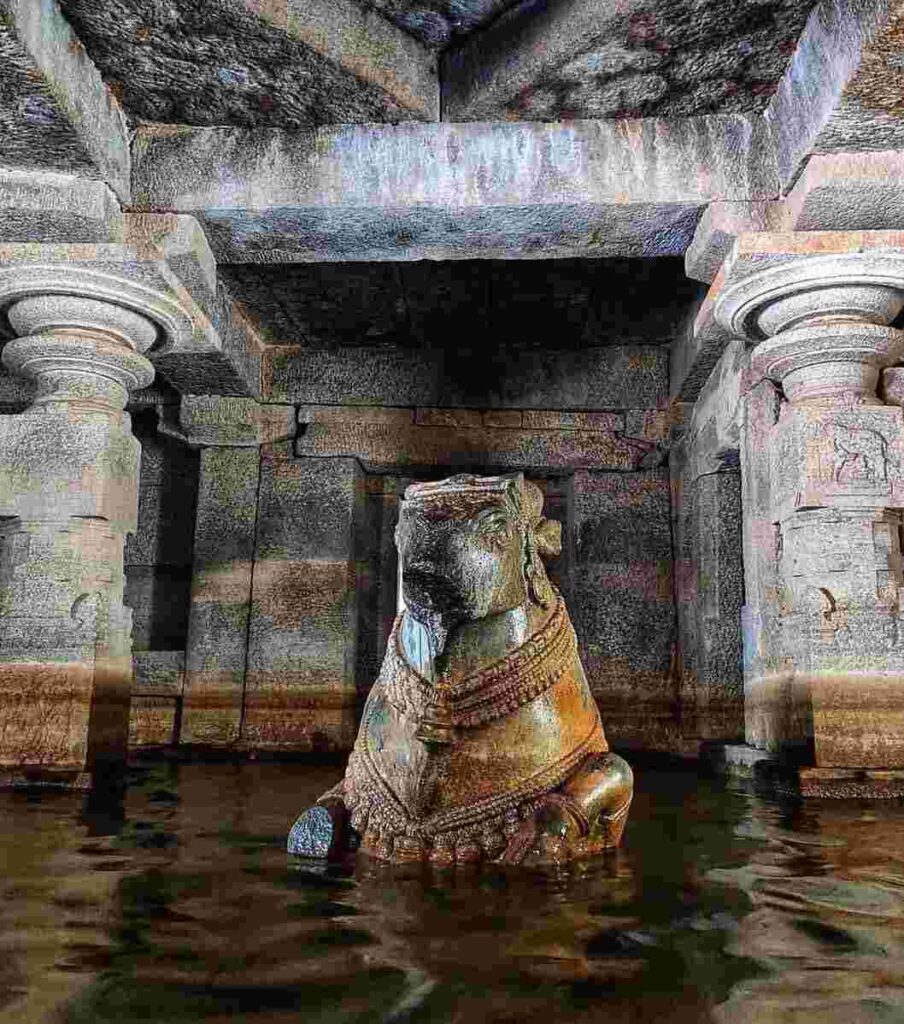
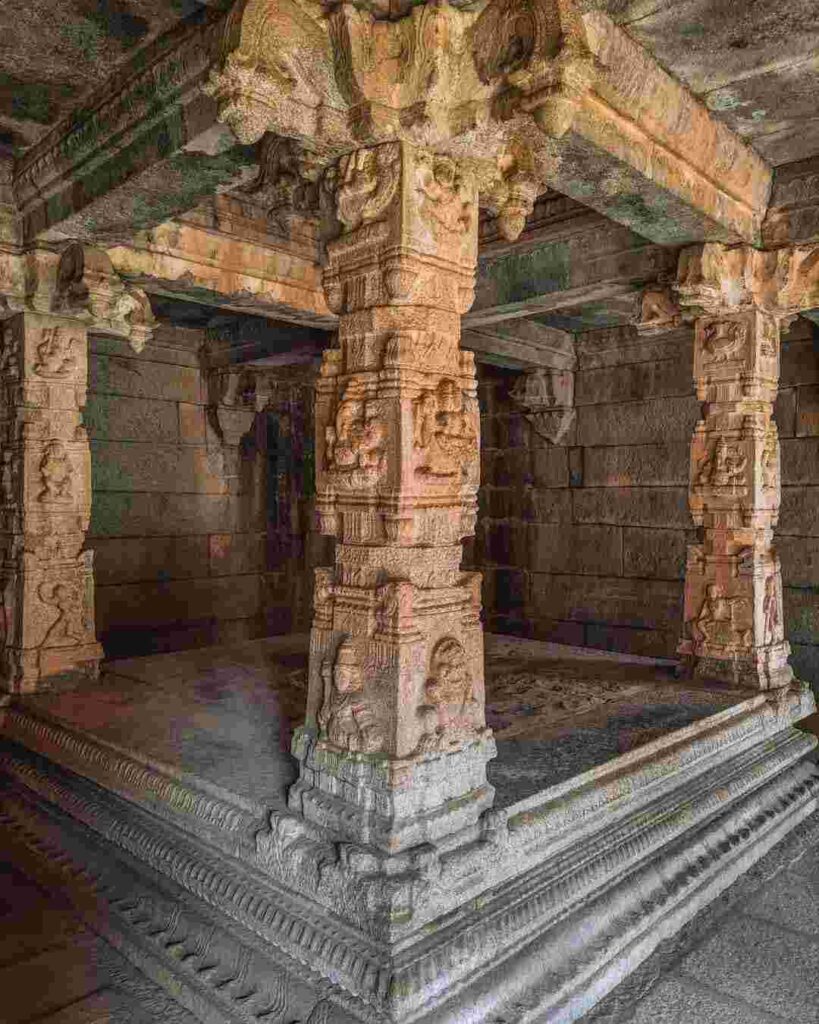
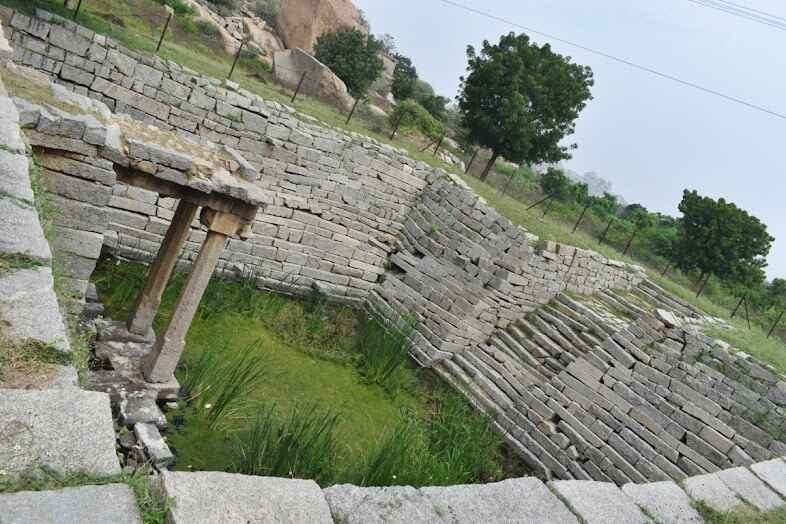
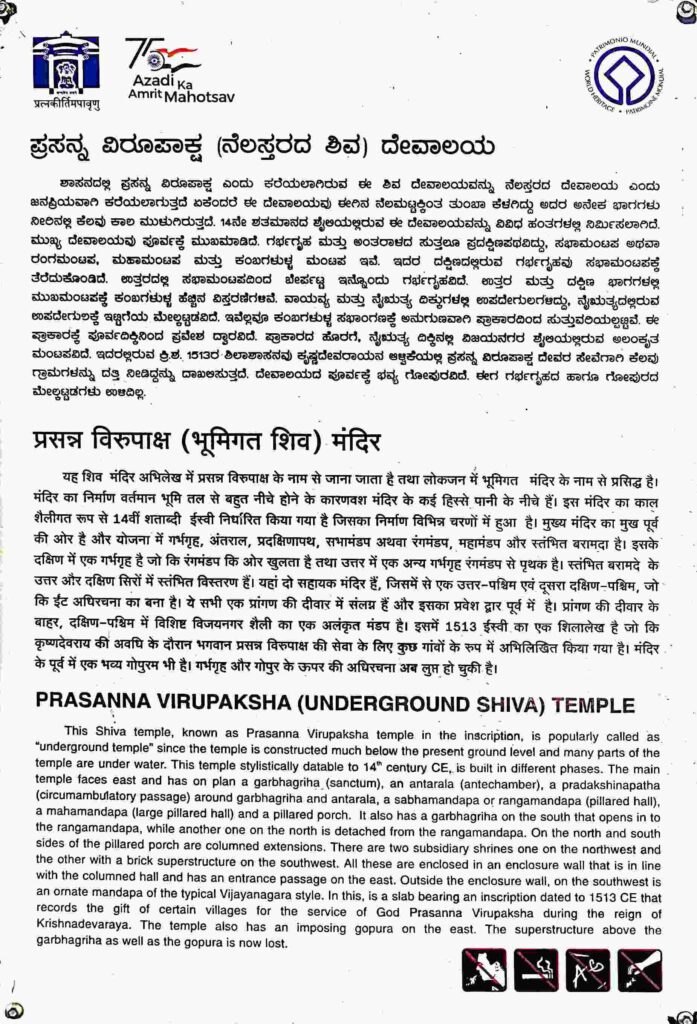
References:-
References from the Following Sources;
- ^[1] – The information about Underground Shiva Temple was sourced from the ASI Information plaque located at the Temple.